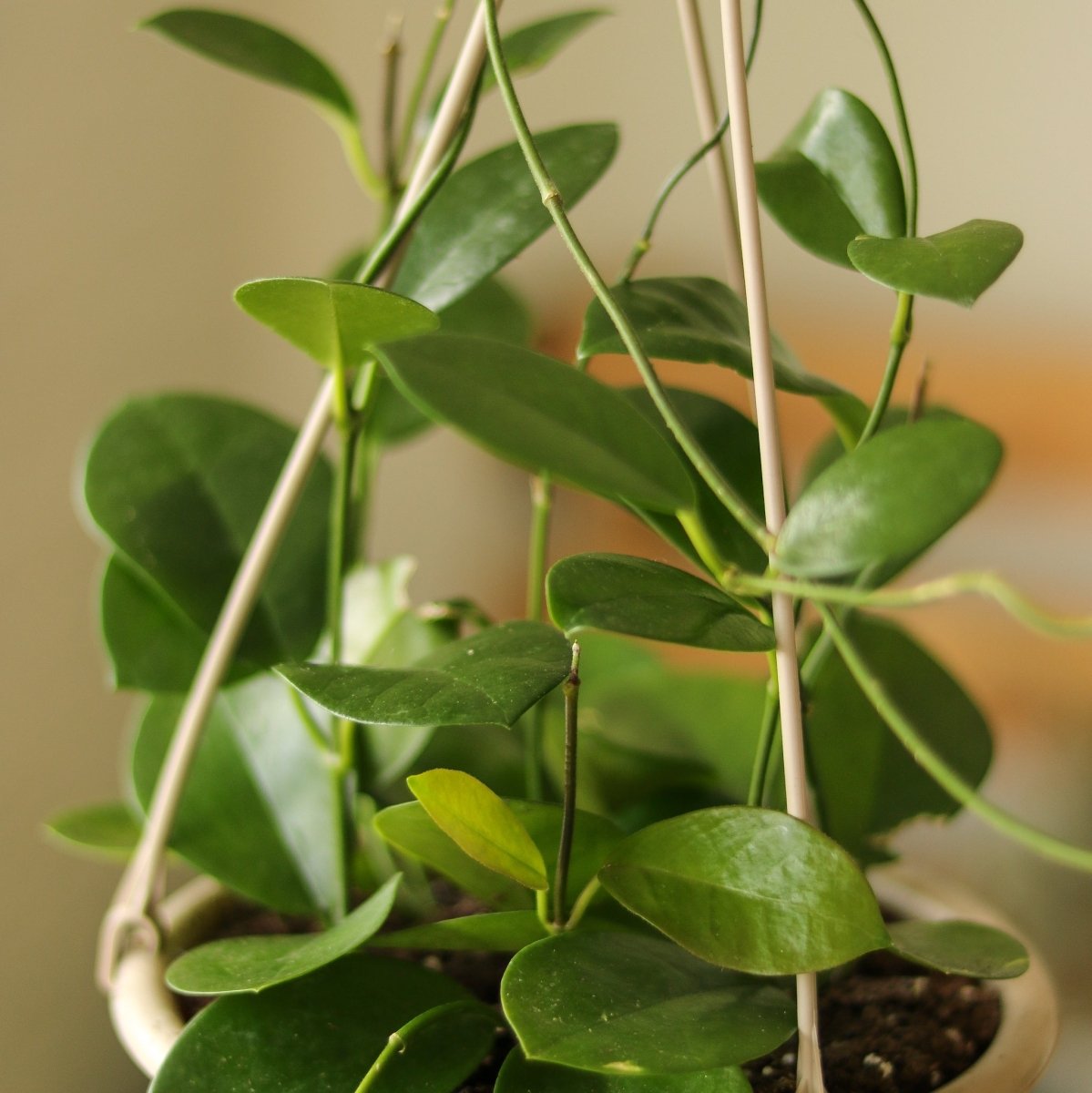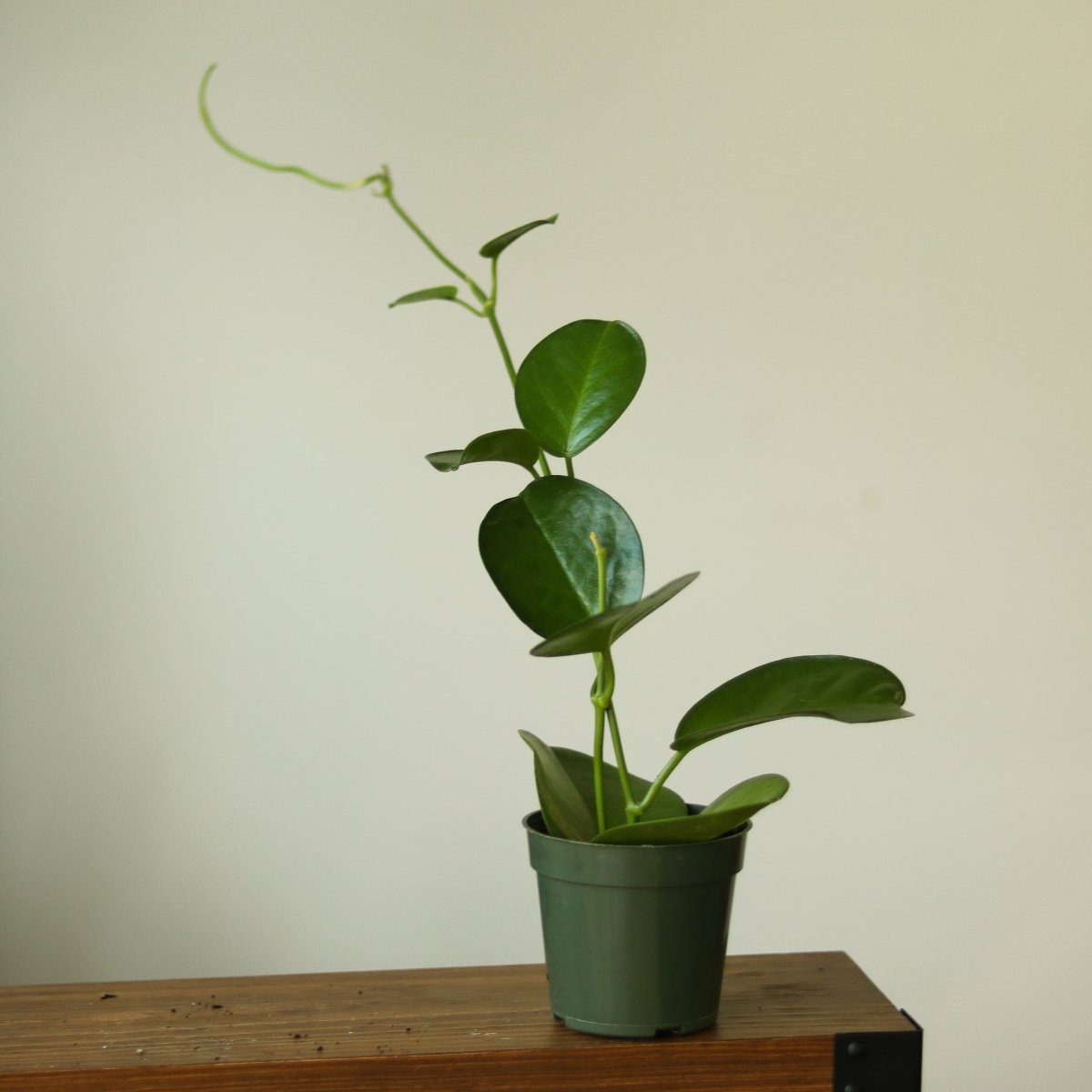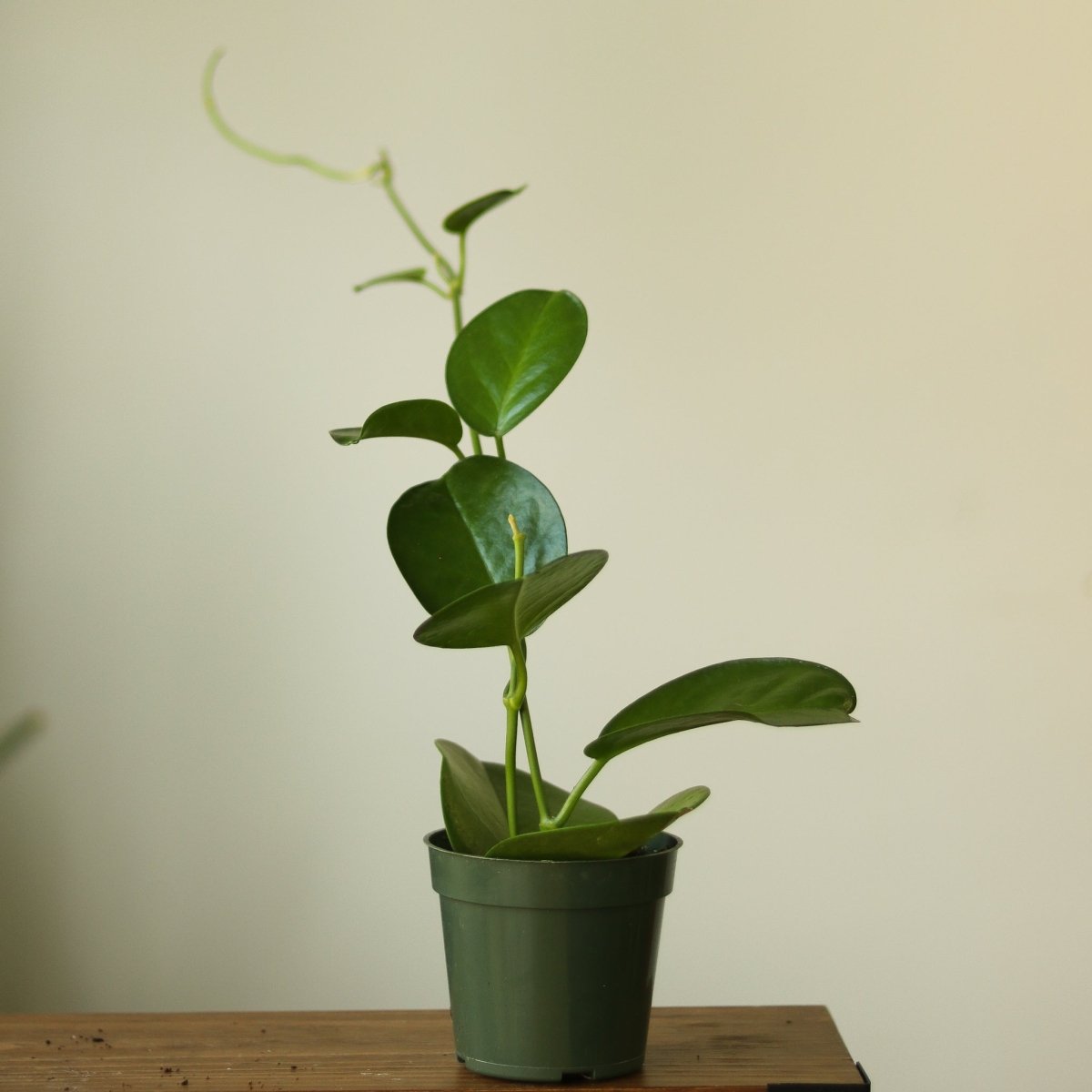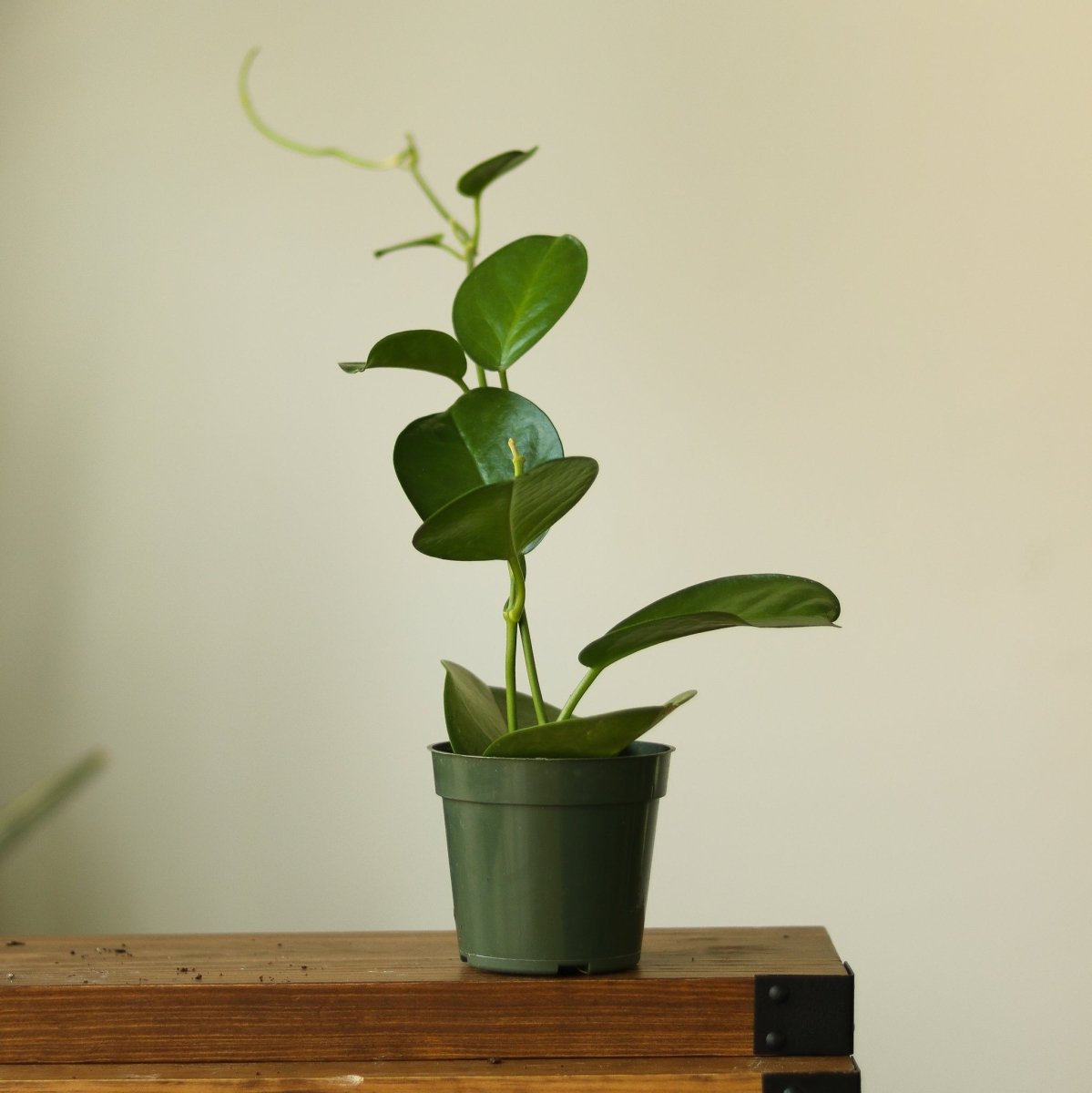Hoya Australis 'Waxvine' - Various Sizes
Hoya Australis 'Waxvine' - Various Sizes - 4" Nursery Pot is backordered and will ship as soon as it is back in stock.
Couldn't load pickup availability
Description
Description
The Hoya Australis 'Waxvine' plant is a easy to grow member of the Hoya family. These plants were first collected by Europeans in 1770 on the northeastern coast of Australia and have the unique ability to attract butterflies when grown outside. It is recognizable by it's waxy green leaves and showy white flowers. This plant appreciates bright, indirect light and needs humidity to thrive.
Waxvine Hoya Plant Profile
- Botanical Name: Hoya Australis
- Common Name: Waxvine, Common Waxflower
- Family: Apocynaceae
- Native Range: Australia
Ed's Care Guide
- Care Level: Moderate
- Light: 6-8 hours of bright, filtered light. Harsh light will burn the foliage.
- Water: Allow top 1-2 inches of soil to dry out between watering; avoid over-watering. Smaller, more frequent watering is often best. This plant is drought tolerant yet if allowed to dry out too much, the waxy leaves will begin to shrivel and yellow; this is a sign to increase your watering schedule. If allowed to stay too moist, this may cause bacteria and root rot to develop.
- Humidity: Average 50-75%;Tolerant of lower levels of humidity
- Temperature: 55–85F
- Pruning: Prune as needed to remove brown or dead leaves and control growth.
- Feeding: Use a general-purpose liquid houseplant fertilizer at half strength once every month during the spring and summer only.
- Propagation: Cuttings
- Growth: Fast-growing compared to other Hoyas. Trailing, vining growth habit will often follow the light and can be trained to grow up a trellis, totem pole or wall for a vertical display. This plant also looks elegant trailing from a hanging basket planter.
- Soil: Use a well-draining, lightweight soil mix, such as commercially available cactus soil.
- Pests: Look out for aphids, spider mites, mealybugs and other scale insects
- Toxicity: Hoya are widely known to be non-toxic to humans and animals
Want To Be An Expert Hoya Grower?
Check out our Hoya care guide for tips from our experts on how to grow the thickest, lushest hoyas.
Looking for houseplants that are safe for your furry friends? Check out our Guide to pet-friendly plants and learn how to create a vibrant, pet-safe space today!
Keep Your Plants Cozy with Heat Packs
Frequently Asked Questions
Shipping
How do you ship your plants?
How do you ship your plants?
We carefully package each plant with love by hand right from our shop in Brooklyn. Extra steps are taken to ensure that every leaf arrives in pristine shape by using polyfill and encapsulating the plant in a protective paper sleeve. The soil is also hydrated before shipping so that the plant has plenty of water for it's travel to your doorstep. We offer several shipping speeds, so please choose the one that you feel comfortable with depending on your location.
Will my plant look like the one on the website?
Will my plant look like the one on the website?
Awesome question, we're glad you asked. Given the nature of our plant shop, we're constantly moving plants in and out of the shop, making it difficult and borderline impossible to keep an exact picture of each plant. In addition to the constantly rotating crop, we often grow in batches of 6, 12, or sometimes more! With this quantity we are unable to take a photo of each and every plant. The photos that we attach to each product listing is going to be of a plant that represents the average size and fullness of that set of plants. Some may be slightly larger or smaller, but in general, similar.
Do you include heat packs with your plants?
Do you include heat packs with your plants?
We offer Heat Packs for sale separately from the plants in 40, 60 and 72 hour increments. Please add a heat pack or two to your order if you live in an area where your order may be affected during transit by cold temperatures. We are not responsible for orders that are placed and damage is incurred to the plant if a heat pack is not purchased.
Which heat pack should I choose?
Which heat pack should I choose?
Heat packs come in three different increments, so please choose the appropriate hour increment depending on the speed of shipping that you choose during checkout. For example, if you choose a cheaper shipping option that will take longer, please select the 72 hour heat pack. If you've chosen a shorter method of shipping, the 40 or 60 hour increment would work! We like to encourage our customers to always get more than you need, just to be on the safe side!
How long will it take to receive my order?
How long will it take to receive my order?
Standard shipping normally takes 3-5 days. Next day shipping is available on all domestic orders (for an additional charge). International shipping times depend on the products and destination (estimated at checkout).
Do you offer express shipping?
Do you offer express shipping?
All orders are shipped 5-8 business days from the date it is placed. Please note that as a small plant shop, we do everything in our power to get orders out as fast as we can in the order that they come in. If you have circumstances that require expedited fulfillment, please connect with you and we can potentially offer options.
What countries do you ship to?
What countries do you ship to?
We ship our selection of rare, healthy, and unique houseplants all across the United States including California. At this time, due to customs and agricultural limitations, we are unable to ship plants internationally from the United States.
Returns and Refunds
How do I return a product?
How do I return a product?
Items must be returned within 30 days after receiving your order. Items must be returned in the same condition in which they were received, be unworn/unused, have any tags still attached, and include all the original packaging.
How long will it take to receive my refund?
How long will it take to receive my refund?
Refunds are processed within 7 days from when we receive the item(s).
What should I do if my plant arrives in poor shape?
What should I do if my plant arrives in poor shape?
In the extremely unlikely event that your plant arrives in less than perfect condition, you're covered by our 15-day plant health guarantee. Simply snap a photo of your plant and send it over to us. We'll happily take a peek and offer suggestions on how to perk it back up, offer a store credit, or send a replacement. We like to make it as easy as possible!
Can I return or exchange a plant?
Can I return or exchange a plant?
At this time, we do not accept returns on plants. In extreme circumstances where a return of a plant is necessary, the customer is responsible for the return shipping and a refund will only be issued if the plant arrives back to us in living condition.













































































